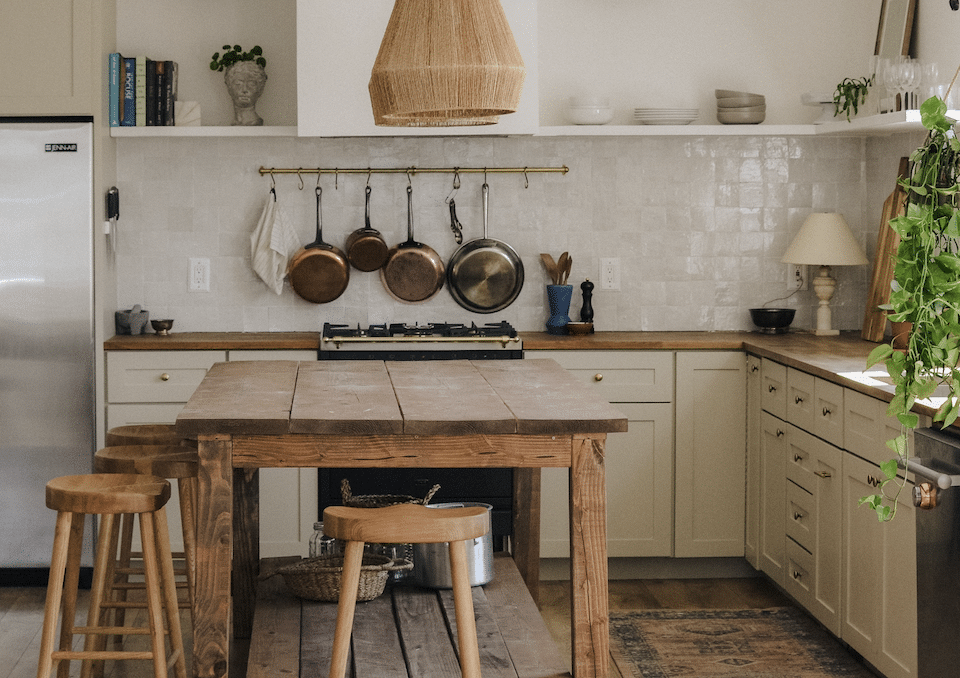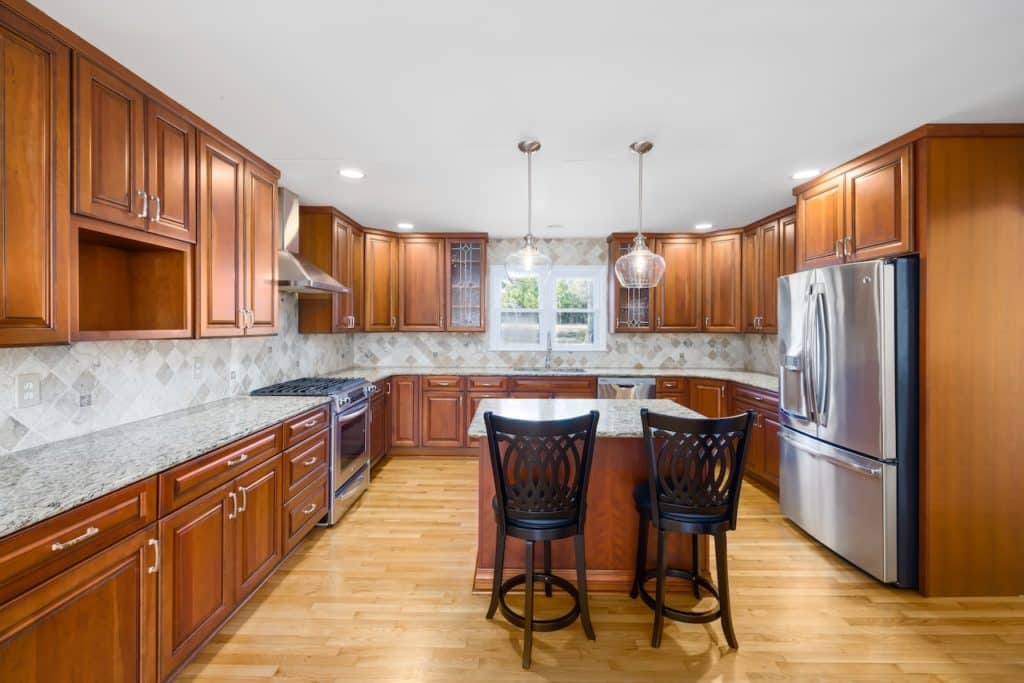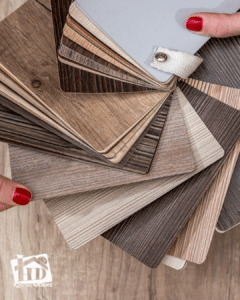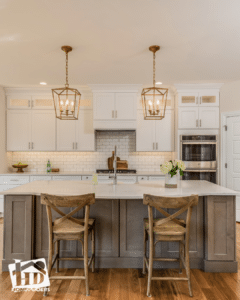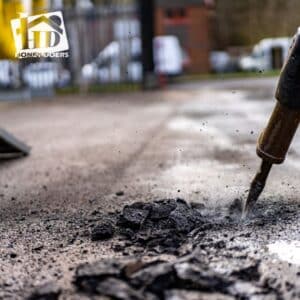In an era where sustainability has become a focal point, restoring and reusing items, especially when it comes to home renovations, has never been more relevant. Rustic kitchen cabinets, with their charming vintage appearance and sturdy construction, are a prime example. Not only can restoring these gems save homeowners money, but it also helps in preserving a slice of history and reducing our environmental footprint. In this guide, we’ll delve into the various rustic kitchen ideas, offering a comprehensive “how to restore a kitchen” guideline, with a particular focus on kitchen cabinet restoration. Towards the end, discover how Honey-Doers can elevate your rustic modern kitchen transformation experience.
Benefits of Restoring Rustic Kitchen Cabinets
1. Sustainability:
A. Reduce Waste: Restoration leads to less material being sent to landfills, helping to minimize environmental impact.
B. Save Resources: New production consumes resources like wood and energy. By restoring, you’re cutting down on the demand for these resources.
2. Cost-Efficiency:
A. Material Savings: Restoration materials often cost less than brand new fixtures and fittings.
B. Labor Cost: It might be more cost-effective to refinish cabinets than to install new ones, especially if specialized labor is required for installation.
3. Preserving History:
A. Story Preservation: Cabinets, especially older ones, come with histories and memories. Restoring them allows these tales to live on.
B. Architectural Integrity: Older homes often have specific architectural styles. Restoring cabinets can maintain the home’s consistent and original aesthetic.
4. Unique Style:
A. Individuality: In a world of mass production, having a unique, rustic kitchen sets your home apart.
B. Versatility: Rustic cabinets can blend seamlessly with various decor styles, from farmhouse to industrial, offering homeowners flexibility in design.
5. Improved Quality:
A. Old is Gold: Older cabinets are often of higher quality, made from solid wood compared to some modern versions which might use veneers or particleboard.
B. Longevity: With the right care during the restoration process, these cabinets can be as durable, if not more so, than newer alternatives.
6. Eco-friendly:
A. Lower Carbon Footprint: Producing new cabinets often involves transportation, manufacturing, and other processes that contribute to a larger carbon footprint. Restoration reduces this impact.
B. Chemical Reduction: Newer cabinets might be treated with chemicals that can off-gas over time. Older, solid wood cabinets might have fewer of these issues, especially after a careful restoration.
7. Increased Home Value:
A. Appeal: Restored rustic cabinets can be a unique selling point for potential homebuyers looking for character in a home.
B. Preservation: Maintaining the original features of a house, especially in historic homes, can increase its market value.
Harnessing these benefits not only provides homeowners with a visually appealing space but also offers various economical, environmental, and qualitative advantages.
Steps for Kitchen Cabinet Restoration
1. Assessment
Before diving in, take the time to evaluate the current state of your cabinets. Ensure a thorough check for any structural damages, signs of wear, or missing parts. This step helps in creating a restoration blueprint tailored to the specific needs of your cabinets.
● Check for structural damages like cracks, rot, or warping.
● Make a note of areas with significant wear, missing knobs, or tarnished hardware.
2. Cleaning
A clean surface ensures an effective restoration process. Cleaning lays the groundwork for the steps to come. It’s crucial to eliminate any accumulated dirt, grease, or debris for a smooth restoration. Using mild cleaning agents can protect the wood while effectively cleaning the surface.
● Empty cabinets and remove hardware (knobs, pulls, and hinges).
● Clean surfaces with a mixture of mild dish soap and warm water.
● For stubborn grease or grime, consider using a commercial kitchen cleaner, ensuring it’s suitable for wood.
3. Sanding
This step prepares the surface for paint or stain. Sanding removes the old finish and evens out imperfections. Following the grain of the wood ensures a consistent and scratch-free surface. Transitioning from medium to fine-grit sandpaper guarantees optimal smoothness.
● Use a medium-grit sandpaper (like 120-grit) to remove the old finish.
● Sand in the direction of the wood grain to prevent scratches.
● Once the old finish is off, switch to a fine-grit sandpaper (like 220-grit) to smooth the surfaces.
● Wipe down with a tack cloth to remove all sanding dust.
4. Repairing
Address any structural or aesthetic issues. This step ensures the longevity of the restoration. Using wood fillers and replacements where necessary revitalizes the strength and integrity of the cabinets, making them as good as new.
● Fill minor cracks or holes with wood filler, allowing it to dry before sanding smooth.
● Replace broken boards or panels as necessary.
5. Refinishing
Give your cabinets a fresh new look. Depending on the desired look, homeowners can choose between stains or paints. A sealant is essential post-refinishing, as it safeguards the cabinets from wear, tear, and external elements.
● If staining, choose a color that complements the rustic style. Apply with a brush, wiping off excess stain to achieve the desired intensity.
● If painting, opt for a semi-gloss or satin finish for durability. Light colors often accentuate the rustic look.
● Always apply a sealant like polyurethane after staining or painting to protect the cabinets.
6. Updating Hardware
Modern hardware can add a contemporary twist to rustic cabinets. Hardware not only serves a functional role but also adds to the aesthetics of the cabinets. Contemporary choices can bring a refreshing touch, bridging the gap between rustic and modern styles.
● Choose hardware that complements your chosen finish.
● Consider brushed nickel, bronze, or black for a rustic modern kitchen touch.
7. Reinstallation
Put everything back together. This final step involves meticulously putting all pieces back together. Reinstalling the doors, drawers, and hardware completes the restoration journey, revealing a rejuvenated kitchen space.
● Reattach doors and drawers.
● Install updated or cleaned hardware.
Honey-Doers: Your Partner in Kitchen Restoration
Restoring a rustic kitchen can be a fulfilling DIY project. However, the challenges and intricacies involved can sometimes be overwhelming. This is where Honey-Doers comes in. With a team of professionals experienced in the realm of kitchen cabinet restoration, Honey-Doers can simplify the process for homeowners, ensuring impeccable results that infuse life back into rustic kitchens. Whether you’re looking for guidance on specific rustic kitchen ideas or need hands-on help, Honey-Doers is committed to revitalizing your space with expertise and passion.
In Conclusion
Embracing the charm of a rustic kitchen does not mean compromising on modernity or functionality. Through careful restoration, you can have the best of both worlds: a kitchen that tells a story and a space that meets contemporary needs. Dive into this journey of restoration, and let Honey-Doers be your trusted companion in crafting the rustic modern kitchen of your dreams.


